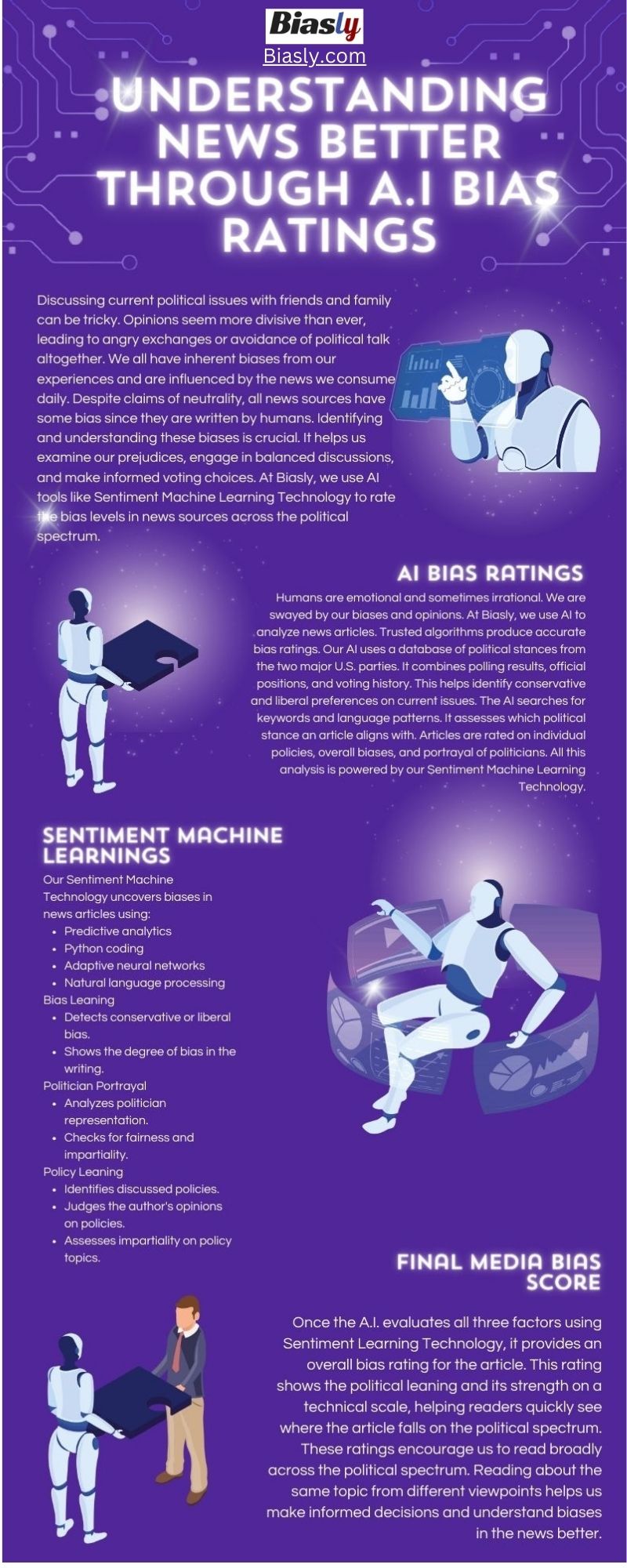
Having a conversation with friends and family about the political issues of the day can be fraught with danger. Opinions between people seem to be more divisive than they have ever been at any other point in history, often creating angry, frustrated exchanges or resulting in some people not wanting to engage in political discourse at all.
Whilst we all have some form of inherent bias because of our lived experiences, we are also susceptible to influence from the news we consume on a daily basis. Whilst many news sources will claim to be neutral or moderate, they all contain some form of bias because their material has been written by humans just like you and me. Being able to identify and understand these biases is a key step in helping us all to take a closer look at our own prejudices, engage in balanced and meaningful social discourse, and ultimately make educated voting choices.
Here at Biasly, Artificial Intelligence tools such as our Sentiment Machine Learning Technology are used to rate the bias levels in news sources across the political spectrum.
A.I. Bias Ratings
Humans can be emotional and sometimes irrational creatures, swayed by our own biases and opinions. That’s why at Biasly we use Artificial Intelligence to analyze articles and news reports, using trusted algorithms to produce an accurate bias rating.
Our A.I. derives its findings based on our expansive database of political stances for the two major parties in the American political system. Using a combination of polling results, official party positions, and Congressional voting history, our A.I. system identifies the political preferences of American conservatives and liberals in the current climate of political and cultural issues.
The A.I. searches for keywords and language structures to decide on which of these political stances the article most likely resonates with. The article is rated on individual policies, overall biases, and the portrayal of politicians.
The engine room for all this analysis comes from our Sentiment Machine Learning Technology.
Sentiment Machine Learning
Our Sentiment Machine Technology allows the A.I.-based rating system to find patterns in news articles, revealing their biases and prejudices. Developed by professionals, Ph.D. and Masters level engineers and scientists, the technology uses predictive analytics, Python coding software, adaptive neural networks, and natural linguistics processing in order to find key patterns in language and structure. Using this technology, the A.I. is able to work out bias and policy leanings and politician portrayals.
Bias Leaning
Articles are examined for their overall indication of political stances and biases. Through the use of the Sentiment Technology, the A.I. determines if the author leans conservative or liberal, and to what degree. Whilst we all have our own biases, the ratings help you determine how much bias the author is letting into their writing, and therefore the news that you consume.
Politician Portrayal
Against the background of the author’s overall political positions and prejudices, the A.I. also looks for how any politicians referenced in the news article are being portrayed. It looks for whether the politician is given a fair and impartial representation and assessment by the author, and if not, by how much the author is allowing their bias to influence that politician’s portrayal.
Policy Leaning
Lastly, the A.I. will look for specific policies within the article that may be discussed or evaluated, and then judge where the author’s personal opinions are regarding that policy and how well they remain impartial on the subject. While one might generally expect individual policies and the author’s opinions on them to reflect their overall political stances, this is not always the case, and the A.I. assessment can often provide you with interesting information.
Final Media Bias Score
Once the A.I. has evaluated all three factors using the Sentiment Learning Technology, it provides you with an overall bias rating score for the article. The overall political leanings and the strength of that leaning are rated on a technical scale which helps the reader see in an instant where the article lies in the political spectrum.
These ratings are key in encouraging us as consumers of media – and also as engaged citizens – to read broadly across the political spectrum. Reading an article on the same topic across a number of different viewpoints can help us to make informed decisions and understand biases in the news on a deeper level.























